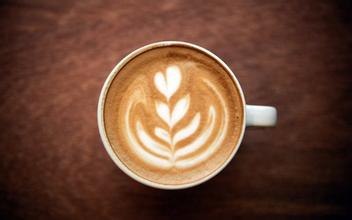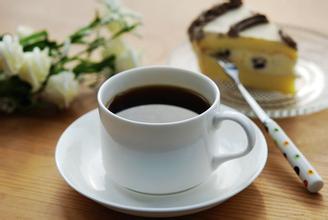What is the better way to make Rosa Coffee
Introduction of Rosa coffee beans
The dry aroma of Rosa is very bright, with aromas of rose and jasmine, with aromas of pomelo and citrus, light baked with nutty aromas, and wet aromas with hazelnut and more floral characters. In terms of taste and flavor, compared with the previously rising aroma, it may be slightly mild and subtle in the early stage, and the flower and fruit flavor will gradually increase as the temperature drops, and the cold aroma is excellent (sweet preserved fruit, rose fruit, orange glaze jam, strawberry jam, silk pine, cherry, vanilla and rose gradually fade, leading to lemon-flavored fruit). This is a coffee that can be praised by a large number of adjectives, the sweetness of the silk, which is testing the brightness of this coffee, especially when it is lightly roasted. The fruity and floral elements are almost like Yega Xuefei from Africa and Ethiopia on the other side of the world. Of course, these are all old news now. Some small farms also get summer roses and are eager to grow their own roses.
However, the results are different, and this "star" variety seems to have different tastes in different geographical locations due to the influence of weather, soil and altitude. However, in the Aktenango region, we see typical rosy summer features: slender beans, changes during baking, and the elegant and unripe flavor of flowers, tropical fruits, and strong sweetness in the cup; these are the feelings that Rosa has always given us. Properly baked, they make you feel like sipping the fragrance of a bouquet of flowers. You may not know the story of Rosa, which was originally an ancient native species from Ethiopia and was brought into a coffee experimental garden in Costa Rica as a coffee sample. and temperature is often considered to be a factor separate from brewing methods when it is distributed to several small farms for small-scale trials, and its influence on brewing techniques is far greater than brewing itself. The temperature of brewing is determined by the temperature of the water at the beginning of brewing and the heat of the water when it reaches coffee. Take Espresso as an example, assuming that the effluent temperature is the same, slow, strong and thin coffee pressed powder must be lower than the fast, loose and thick coffee pressed powder in brewing temperature, so if the thermal insulation of the boiler or outlet is poor, then the slow Shot will have more serious temperature loss.
What we emphasize here is that it is not practical to assume an ideal cooking technique, and the cooking temperature is not really controlled during the cooking process. Except for a special cooking method-Syphon, it is strange that Syphon cooking does not have a very in-depth discussion on the temperature curve. Many people do not like the taste of Syphon, or are less moved by it, but in fact, Syphon is one of the many ways of brewing coffee, a few of which add heat after brewing water, and very few of them can maintain a stable temperature during the 1-4 minute brewing process. In addition, what we are talking about is "stirring". On a theoretical level, stirring reminds us of "inconsistent" and "unrepeatable". What we usually think of is to manually move coffee powder particles with a tool, just like Syphon stirring, but I've always been skeptical about magical stirring techniques in any way, because it's not just your tuner that stirs. When the water rushes into the coffee, the water itself is a kind of agitation that makes the coffee particles move, and the movement of the coffee powder particles will lead to more extraction, the same in the hand, how and where the water is injected, no matter how high the injection will affect the movement of the water, and indirectly affect the extraction behavior. Once again, "stirring" is not so much a function of cooking as a function of skill. From the above, we can know that instead of saying that the cooking method determines the cooking process, it should be said that the artificial skill of cooking determines the process.

Important Notice :
前街咖啡 FrontStreet Coffee has moved to new addredd:
FrontStreet Coffee Address: 315,Donghua East Road,GuangZhou
Tel:020 38364473
- Prev

Description of characteristics and Flavor of Coffee beans in Latin America
Latin American Coffee also has a small number of Jamaican coffee beans grown at low elevations, which can be slightly identified by their names, such as Blue Mountain Valley Coffee, Jamaican Alpine Coffee and so on. Haitian coffee beans, which are washed by Haiti Haiti, are typically sweet, soft and of medium consistency, but they are often caused by mistakes in the processing and drying process.
- Next

Introduction to the Flavor description Variety characteristics of Solar G1 Sidamo Coffee Bean
The improved tanning method, that is, to improve the two shortcomings of the traditional way: 1. When picking beans, only fully ripe crimson coffee cherries are picked. Before exposure, the beans will be screened for defects in the processing plant to make the beans look more average in size and maturity. two。 Next, use a tall wooden frame or a whole scaffolding to make the sun, so that you can avoid putting the beans on the ground.
Related
- Detailed explanation of Jadeite planting Land in Panamanian Jadeite Manor introduction to the grading system of Jadeite competitive bidding, Red bid, Green bid and Rose Summer
- Story of Coffee planting in Brenka region of Costa Rica Stonehenge Manor anaerobic heavy honey treatment of flavor mouth
- What's on the barrel of Blue Mountain Coffee beans?
- Can American coffee also pull flowers? How to use hot American style to pull out a good-looking pattern?
- Can you make a cold extract with coffee beans? What is the right proportion for cold-extracted coffee formula?
- Indonesian PWN Gold Mandrine Coffee Origin Features Flavor How to Chong? Mandolin coffee is American.
- A brief introduction to the flavor characteristics of Brazilian yellow bourbon coffee beans
- What is the effect of different water quality on the flavor of cold-extracted coffee? What kind of water is best for brewing coffee?
- Why do you think of Rose Summer whenever you mention Panamanian coffee?
- Introduction to the characteristics of authentic blue mountain coffee bean producing areas? What is the CIB Coffee Authority in Jamaica?

